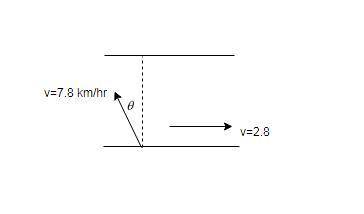

Answers: 2
Other questions on the subject: Physics

Physics, 22.06.2019 08:00, nikkiwoodward1ovgszp
What is the average speed of a car that travels 40 mph for 1 hour and 60 mph in another hour?
Answers: 1

Physics, 22.06.2019 15:40, winterblanco
Question 1 what is amperage? is the rate of doing work. is the rate of flow of protons in electric current. represents the amount of pressure behind electron flow. is the rate of flow of electrons in electric current. 2 points question 2 what is voltage? is the rate of doing power. represents the amount of pressure behind electron flow. is the rate of doing work. is the rate of flow of electrons in electric current. 2 points question 3 what is power? is the rate of flow of protons in electric current. is the rate of flow of electrons in electric current. is the rate of doing work. represents the amount of pressure behind electron flow. 2 points question 4 if we multiply volts times amps we get what? power circuit work current 2 points question 5 what are two ways alternating currents are similiar? in both ac and dc electrons flow in the same pattern. in both ac and dc, the flow of electrons changes directions back and forth. both ac and dc are only possible in certain materials with atoms that will allow electron flow. both ac and dc involve the flow of electrons. 4 points question 6 how does the flow of electrons flow in an alternating current? the flow of electrons is always slower in an alternating current than within a direct current. the flow of electrons is not constant and forward; it changes direction back and forth. electrons flow from from a higher affinity to that of a lower affinity. electron flow is constant and only in a forward direction. 2 points question 7 what is the flow like in a direct current? the flow of electrons is not constant and forward; it changes direction back and forth. the flow of electrons is constant and only in a forward direction. the flow of electrons go from a higher affinity to a lower affinity. the flow of electrons are always faster in a direct current. 2 points question 8 how is an electric current able to flow? electrons flow from the higher affinity to lower affinity and electrical current is generated. protons flow from the higher affinity to lower affinity and electrical current is generated. the movement of protons from one atom to another leads to an electric charge. the movement of electrons from one atom to another atom in a line results in a flow of electric current. 2 points question 9 how do electrons move from the two different types of metal in a battery? protons flow from the metal with the lower affinity to the metal with higher affinity and electrical current is generated. electrons flow from the metal with the lower affinity to the metal with higher affinity and electrical current is generated. electrons flow from the metal with the higher affinity to the metal with lower affinity and electrical current is generated. protons flow from the metal with the higher affinity to the metal with lower affinity and electrical current is generated.
Answers: 2

Physics, 22.06.2019 17:40, tylercapozzoli
Scientists follow specific processes in order to determine valid explanations and conclusions from observations. david observed strange lights in the sky above his home outside of roswell, new mexico. the only explanation that makes sense to him is that there are ufos in the area. what should david do next to verify his explanation?
Answers: 1

Physics, 22.06.2019 17:40, yoongnzl
Aspring is used to stop a 50-kg package which is moving down a 20º incline. the spring has a constant k = 30 kn/m and is held by cables so that it is initially compressed 50 mm. knowing that the velocity of the package is 2 m/s when it is 8 m from the spring and neglecting friction, determine the maximum additional deformation of the spring in bringing the package to rest.
Answers: 1
Do you know the correct answer?
Aboat moving at 7.8 km/hr relative to the water is crossing a river 3.5 km wide in which the current...
Questions in other subjects:





History, 08.07.2019 15:00

Geography, 08.07.2019 15:00



Biology, 08.07.2019 15:00

Mathematics, 08.07.2019 15:00





 with vertical such that it reaches exactly opposite end of initial Point
with vertical such that it reaches exactly opposite end of initial Point component will balance the river Flowso that sin component helps to cross the river
component will balance the river Flowso that sin component helps to cross the river







